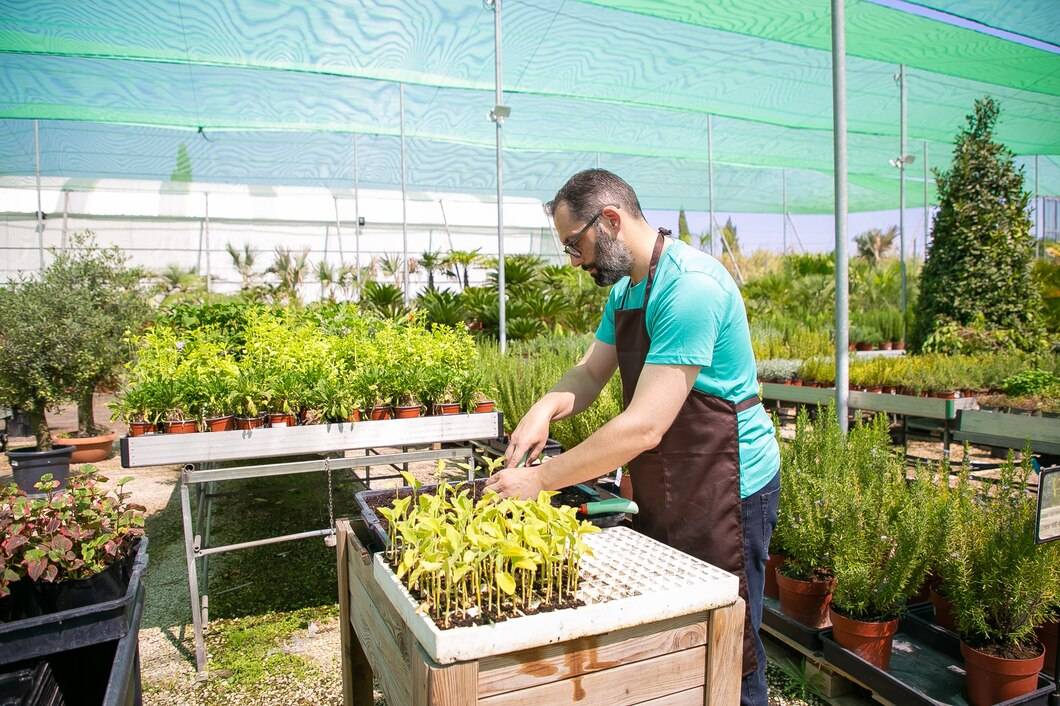Urban living often means smaller spaces, but that doesn't mean you need to sacrifice having a beautiful garden. Many city dwellers are finding that with a bit of creativity and the right approach, it’s possible to create a lush, thriving garden even in the most compact areas. Whether you’re living in an apartment, a small townhouse, or a house with limited outdoor space, there are countless ways to incorporate plants into your home. Not only does a home garden offer aesthetic appeal, but it can also improve air quality, provide a sense of calm, and even yield fresh herbs and vegetables. This post will explore how to transform your small living space into a green paradise, covering everything from selecting plants to maximizing the space you have.
Section 1: Understanding the Limits and Opportunities of Your Space
Before you start planning your garden, it’s essential to assess the space you have. Understanding your environment is the first step to making it thrive.
Subsection 1.1: Analyzing Your Space
Measure Your Space: Whether it’s a small balcony, patio, windowsill, or tiny yard, take accurate measurements to understand the available area for planting.
Sunlight Exposure: Different plants require varying levels of sunlight. Assess the amount of direct sunlight your space receives throughout the day. Some spaces may be sunny all day, while others may have only a few hours of sunlight.
Wind and Weather Conditions: If your space is outdoors, consider how much wind exposure it gets. Wind can dry out plants quickly, so it’s important to select wind-resistant plants or find ways to protect delicate ones.
Access to Water: Ensure your space is near a water source. Compact gardens often require more frequent watering, and it's important to have a hose, watering cans, or even an irrigation system in place.
Subsection 1.2: Defining Your Garden’s Purpose
A small garden can be designed for different purposes. Defining what you want from your garden will help guide your plant selection and overall design.
Relaxation and Aesthetics: If you want a garden to enhance your home's appearance, focus on ornamental plants, flowers, and foliage that complement your space's design.
Herb and Vegetable Garden: If you're aiming to grow your own food, choose plants that are easy to grow in smaller spaces, such as herbs, leafy greens, or compact varieties of tomatoes and peppers.
Wildlife Habitat: Some people want to create a haven for pollinators like bees and butterflies. In this case, you’ll want to incorporate plants that attract these creatures.
Section 2: Maximizing Space with Smart Gardening Techniques
Small spaces require creative solutions to ensure plants thrive. There are several techniques that can help you maximize your space while making the most of your environment.
Subsection 2.1: Vertical Gardening
Vertical gardening is an ideal solution for compact spaces. By growing plants upwards rather than outwards, you can utilize every inch of your garden.
Trellises and Arbors: These structures allow climbing plants like peas, beans, cucumbers, and flowering vines to grow upwards, freeing up valuable ground space.
Wall Planters: Wall-mounted shelves, hanging baskets, and pots can hold plants in smaller spaces. Opt for plants that thrive in containers, such as strawberries, herbs, and succulents.
Vertical Plant Towers: Plant towers allow you to grow multiple plants in a stacked arrangement, which is perfect for veggies like lettuce, spinach, or even small root crops.
Subsection 2.2: Container Gardening
Container gardening allows flexibility in terms of plant variety, and it’s an excellent choice for balconies, patios, or even windowsills.
Choosing Containers: Select containers with good drainage to prevent waterlogging. Terracotta, plastic, and ceramic pots all have their advantages depending on your plant needs.
Self-Watering Pots: For gardeners who have a busy schedule or are away often, self-watering containers can help maintain the moisture levels your plants need.
Creative Containers: You don’t need to stick to traditional pots. Repurposing items like wooden crates, old buckets, or even shoes can add personality to your garden.
Subsection 2.3: Hanging Gardens
Hanging planters are a great way to add a touch of greenery without taking up floor space. Use hooks, shelves, or rails to suspend baskets, pots, or plants from the ceiling or walls.
Hanging Herbs: Herbs like basil, thyme, and rosemary can grow well in hanging pots and be harvested easily for culinary use.
Flower Baskets: Flowering plants like petunias or trailing ivy can be hung in decorative baskets to bring color and beauty to your compact garden.
Repurposed Hanging Planters: Create DIY hanging planters from old tin cans, mason jars, or glass bottles to add an eco-friendly touch to your space.
Section 3: Choosing the Right Plants for Compact Spaces
Not all plants are suited for compact spaces. When designing your garden, it's essential to choose plants that are both manageable and appropriate for your space's conditions.
Subsection 3.1: Compact, Space-Saving Plants
When selecting plants for small spaces, go for compact varieties that will not overcrowd the area.
Compact Veggies: Choose smaller vegetable varieties like dwarf tomatoes, baby carrots, or miniature peppers that will thrive in containers and require less space.
Herbs: Herbs like mint, basil, thyme, and parsley are ideal for small gardens. They grow well in containers and can be easily accessed for cooking.
Miniature Flower Varieties: Opt for small or dwarf flowering plants that pack a punch in terms of color and fragrance but don't take up much room. For example, dwarf hydrangeas, pansies, or marigolds are excellent choices for small gardens.
Subsection 3.2: Indoor Plants for Compact Spaces
Indoor plants are an excellent way to add greenery to apartments or rooms with limited outdoor access.
Air-Purifying Plants: Plants like snake plants, spider plants, and peace lilies are not only beautiful but also help purify the air in small spaces.
Succulents: Succulents are perfect for small, indoor spaces because they require minimal maintenance and thrive in small pots.
Low-Light Plants: If your space doesn’t receive much natural sunlight, go for plants that can survive in low-light conditions, such as pothos or zz plants.
Section 4: Creating a Sustainable Compact Garden
Sustainability is key when designing a compact garden, especially in urban areas where resources like water and space can be limited.
Subsection 4.1: Water Conservation
Watering is often the most time-consuming aspect of garden care, especially in small spaces where plants may dry out quickly. Here are some tips for conserving water.
Rain Barrels: Collect rainwater in a barrel to use for irrigation. This is an environmentally-friendly way to keep your garden hydrated while reducing your water bill.
Mulching: Apply a layer of mulch to retain moisture in the soil. This will help your plants stay hydrated longer and reduce the need for frequent watering.
Drip Irrigation: A drip irrigation system delivers water directly to the roots of your plants, minimizing water wastage.
Subsection 4.2: Composting
Composting is a sustainable way to recycle organic waste and create nutrient-rich soil for your garden.
Bokashi Bins: For small spaces, bokashi composting allows you to compost food scraps indoors without odors.
Outdoor Composting: For larger spaces, setting up a compost bin in a corner of your garden can yield rich, organic soil.
Section 5: Maintaining Your Lush Home Garden
A garden, no matter its size, requires regular maintenance to ensure it thrives. While compact gardens are generally easier to maintain, consistent care is essential.
Subsection 5.1: Pruning and Harvesting
Regular pruning helps your plants grow healthier and prevents them from becoming overgrown. For edible gardens, harvesting plants regularly encourages more growth and ensures you get the most from your crops.
Subsection 5.2: Pest Control
Even in small gardens, pests can become a problem. Organic pest control methods like introducing beneficial insects (ladybugs, bees) or using neem oil are ideal for compact garden spaces.
Subsection 5.3: Fertilizing
Small gardens, especially those grown in containers, often require additional nutrients. Organic fertilizers or compost are great options to keep your plants healthy without the use of harsh chemicals.
Embracing the Beauty of Compact Gardening
Designing a lush home garden in a compact space may seem like a daunting task, but with the right planning, creativity, and commitment, it’s entirely possible. From vertical gardening and container planting to choosing the right plants and maintaining sustainability, there are endless ways to make the most out of your limited space. Whether you’re growing your own food, creating a relaxing retreat, or simply adding greenery to your home, a compact garden can bring beauty and serenity to your life.
By focusing on smart gardening techniques and incorporating the right plants, you’ll not only create a lush oasis but also build a sustainable, eco-friendly space that can be enjoyed for years to come. So roll up your sleeves, get creative, and start your compact garden today!


